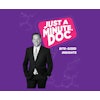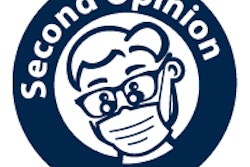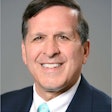
The total annual revenue created by U.S. retail dental practices in 2014 was $125 billion, according to the statistics portal Statista.com. This puts retail dentistry in the same revenue class as AT&T, Verizon, Hewlett-Packard, Siemens, and Nestlé.
 Thomas Climo, PhD, is a dental practice management consultant and a past professor of economics in England.
Thomas Climo, PhD, is a dental practice management consultant and a past professor of economics in England.No one would ever argue for limited accounting or a cottage industry capitalization rate for any of these companies, but retail dentistry somehow continues to operate without a recognition of best practices accounting and with capitalization rates not in keeping with the mainstream. Capitalization rate is the net income an asset produces in a given year divided by its purchase price.
The phrase "cottage industry" exists for those industries that account for its transactions apart and different from the mainstream. The clearest way to tell if your industry is cottage or not is to see if it is listed as a industry line item in the empirical comparison metrics made available in the dataset from the Stern School of Business at New York University (NYU), such as this one.
In these data, there are seven retail industry line items (Automotive, Building Supply, Distributors, General, Grocery & Food, Online, and Special Lines), but no line item for Retail (Dental). Four reasons exist for this absence, and three turn on the deficiency of the accounting of and accounting for dental practices:
- Lack of comparability among the financial statements of solo practitioner and group practices
- No standardized formatting of financial statements that would allow for this comparison
- No agreement as to what constitutes earnings before interest, taxes, depreciation, and amortization (EBITDA) and net income
- The presence in the dental industry of a valuation basis out of sync with the rest of the more than 100 industries in the NYU Stern dataset
Although I have given great credence in this column to the cost of capital metric, there are other metrics of equal importance for understanding your industry in comparison with other industries. Things such as the tax rate, margins, debt-to-equity ratio, capital expenditures, depreciation, working capital requirements, EBITDA multiples, and standard deviation of income statement results, as well as the inherent beta risk of your industry may be things that practicing dentists don't want to hear about but should know.
However, at this moment in the history of retail dentistry, the financial statements of a dental practice exist to accomplish a single goal -- to prepare tax returns. There is a disconnect between the dental practice management software and the accounting software such as QuickBooks or Peachtree. Current accounting software lacks an open architecture to allow for a true integration with dental practice management programs.
Because of this, all pertinent information about the production aspect of the practice are captured in one computer program (practice management software), while the accurate expenses of the practice are depicted in a separate nonintegrated accounting program. Most practices then record cash collections into the accounting software, so the certified public accountant is reluctantly left with only cash basis financial statements from the accounting software.
“Retail dentistry somehow continues to operate without a recognition of best practices accounting.”
This is fine for tax purposes, but accrual basis financials are more desirable when it comes to management, valuation, and bank reporting. The best example of this is the 100% "free" first-year depreciation allowance permitted by the Internal Revenue Service (IRS) as an incentive for the investment in capital equipment by companies and dental practices.
What good is an income statement for finding a net repeatable income that has a $200,000 depreciation expense in year one and $0 for the same capital item in years two through 10? For that matter, what good is an income statement that has the majority of the salary paid to its highest producer (the owner-dentist) put into the balance sheet as a capital draw?
Overstating net income by not taking an appropriate expense for the lead producer is a sure way to send the wrong information about EBITDA and net income to other interested parties in your practice and the IRS.
The cost-of-capital metric is one of my favorite subjects, as this metric provides the basis for the discount rate to evaluate your business. It is the opportunity cost for evaluating your dental practice. What is alarming is that if your industry is not in the NYU Stern list, then your cost of capital is not empirically derived.
Absence of a line item for a retail dentistry cost of capital means proxies must be used such as, in 2014, my use of private equity cost of capital, and, in 2015, healthcare support services. At 9.46% and 7.08%, respectively, these proxies only allow guesswork as to the correct hurdle rate to use in valuing the EBITDA or net income of a dental practice or group.
Financial reporting in dental practices
No one would ever confuse the financial reporting of dental practices with a Securities and Exchange Commission (SEC)-approved or generally accepted accounting principles (GAAP)-compliant balance sheet and income statement other than for its compilation of the data collected. But there is no reason why the dental industry should be the laggard that it is in standardizing and improving the financial reporting of dental practices.
Do I really believe that a set of dental practices worth a million dollars is worthy of the infrastructure investment necessary for an industry to rise to the level of SEC reporting? Yes, because $1 million practices are being replaced by $100 million or more dental service organizations (DSOs), and because otherwise the dental industry will never have its own cost of capital line item at NYU Stern.
The opportunity cost of retail dentistry will continue to be guesswork until and unless we have empirical evidence of the cost of capital of retail dentistry. High opportunity costs make for less value, and certainly practicing dentists must have interest in a greater than lesser valuation for their practices.
The path to better financial reporting starts with the accounting software system to be used that best integrates with the dental practice management software also in use -- a move from existing accounting software to something more wholesome and developed. While this more developed software may take a while to set up, it also may offer extra security, information access, and integration.
At $125 billion in annual sales, retail dentistry's time has come to elevate itself beyond a cottage industry and head for the mainstream. Better and standardized financial reporting are key to this elevation, as is the recognition that learning the empirical cost of capital for retail dentistry will take the guesswork out of practice valuation.
Thomas Climo, PhD, is a professor emeritus of accounting and finance at a major university in the U.K. He has published extensively about the importance of modern managerial and financial decision-making for dentistry. He is a consultant to corporate and solo practitioner dental practice management companies in the states of Arizona, California, Connecticut, Nevada, New Hampshire, New York, and Massachusetts. He can be reached by email at [email protected] or by telephone at 702-578-2757.
The comments and observations expressed herein do not necessarily reflect the opinions of DrBicuspid.com, nor should they be construed as an endorsement or admonishment of any particular idea, vendor, or organization.



















